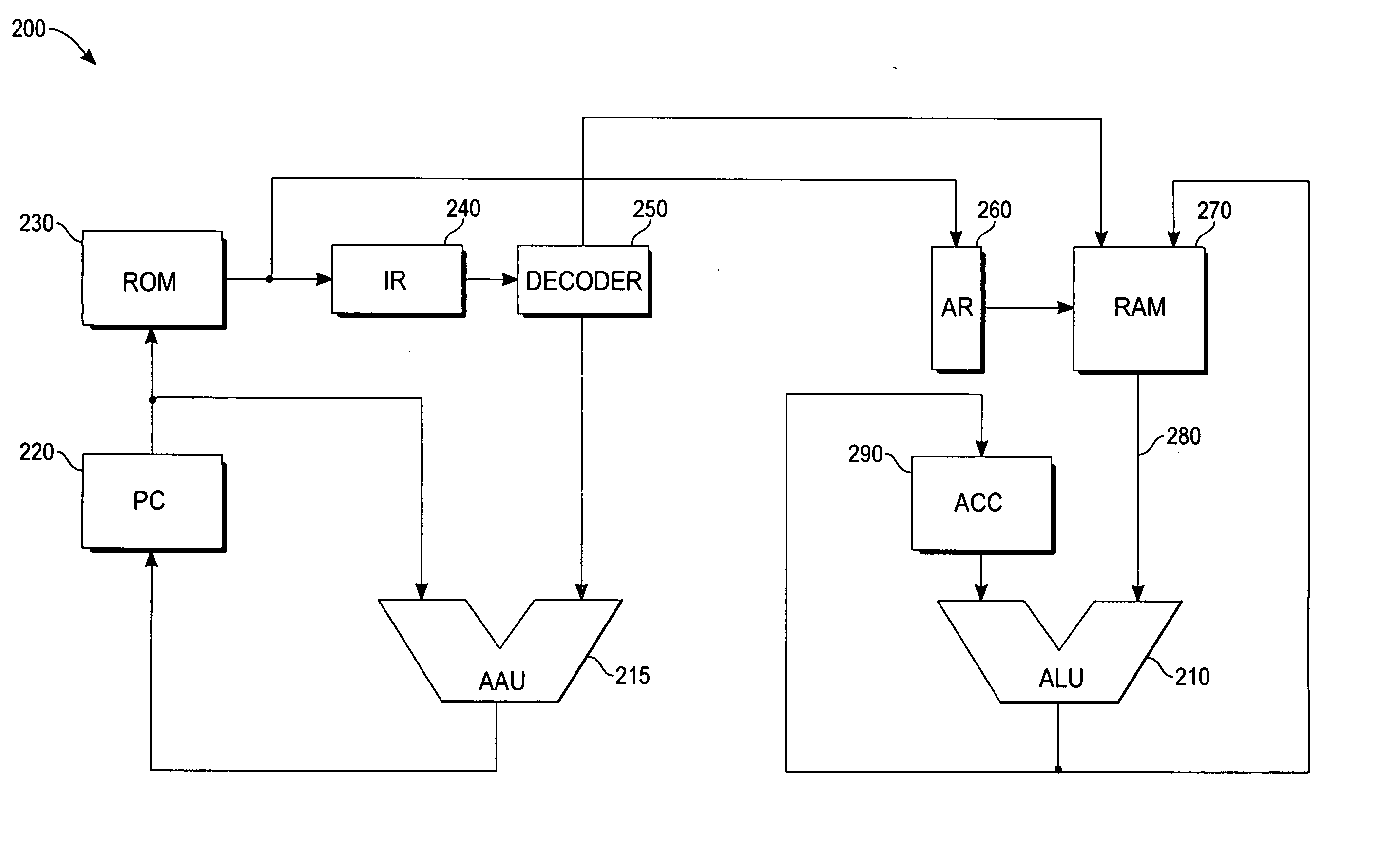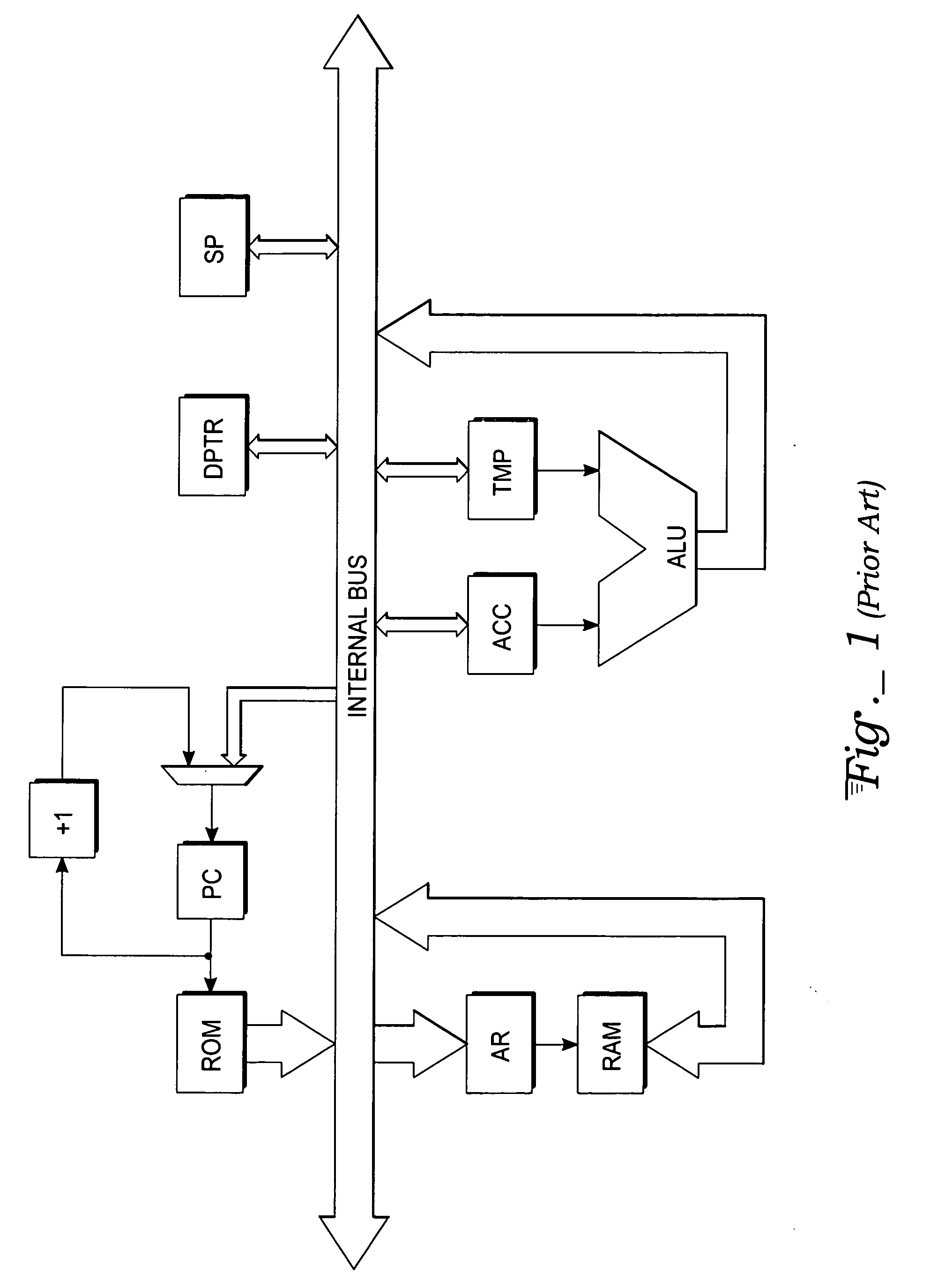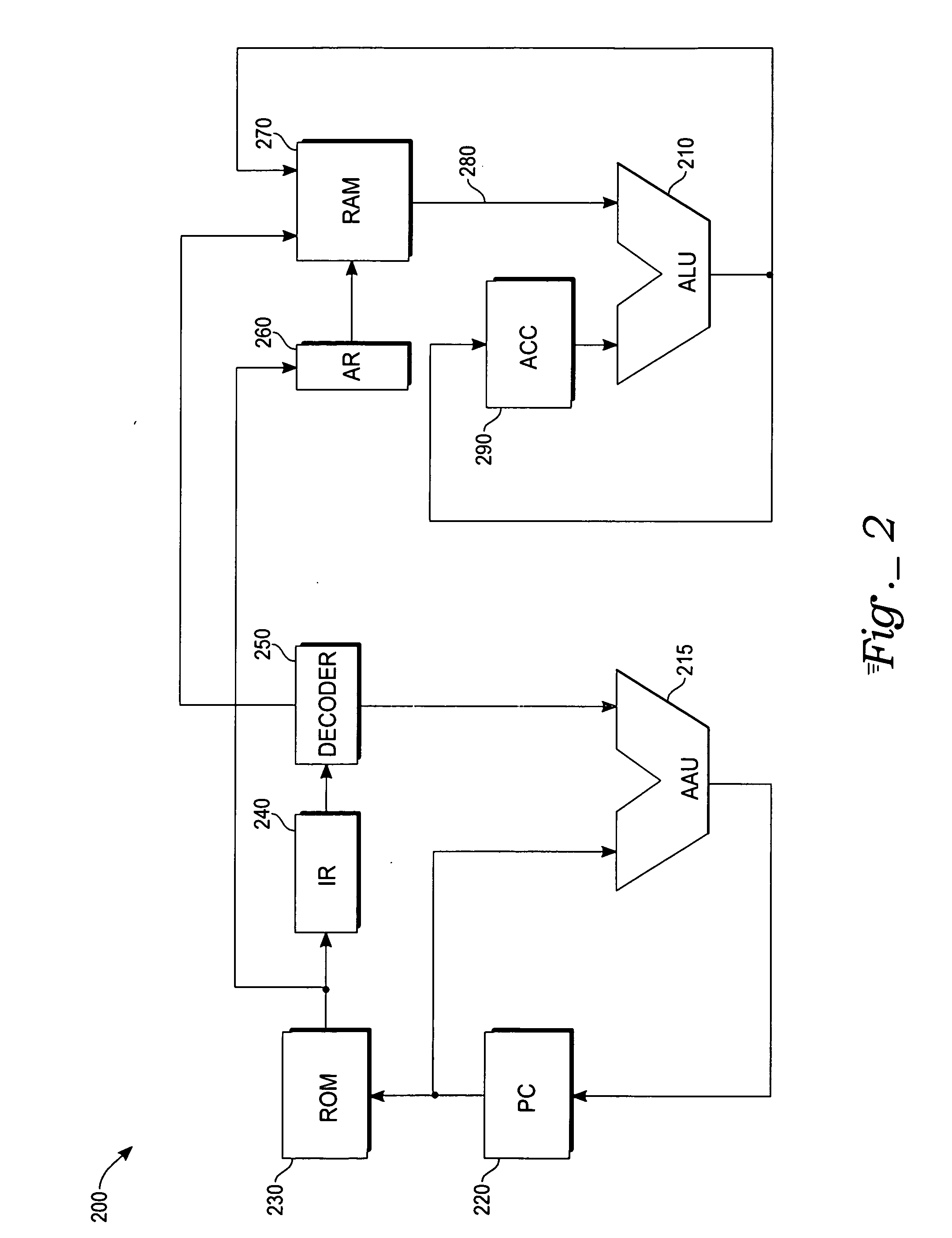Single-cycle low-power CPU architecture
- Summary
- Abstract
- Description
- Claims
- Application Information
AI Technical Summary
Benefits of technology
Problems solved by technology
Method used
Image
Examples
Embodiment Construction
[0026] With reference to FIG. 2, a central processing unit (CPU) pipeline architecture portion 200 according to an exemplary embodiment of the present invention comprises an arithmetic logic unit (ALU) 210 having a first data input, a second data input, and a data output. In the exemplary embodiment, the arithmetic logic unit (ALU) 210 is configured to operate upon eight-bit binary numbers. The data output of the arithmetic logic unit (ALU) 210 is coupled to an accumulator register (ACC) 290, and to a random access memory (RAM) 270. In addition the exemplary embodiment contains an address arithmetic unit (AAU) 215 having a first data input, a second data input, and a data output. In the exemplary embodiment, the address arithmetic unit (AAU) 215 is configured to operate upon sixteen-bit binary numbers. The data output of the address arithmetic unit (AAU) 215 is coupled to a program counter (PC) 220.
[0027] The random access memory (RAM) 270 is organized as 256×8 bits, for a total st...
PUM
 Login to View More
Login to View More Abstract
Description
Claims
Application Information
 Login to View More
Login to View More - R&D
- Intellectual Property
- Life Sciences
- Materials
- Tech Scout
- Unparalleled Data Quality
- Higher Quality Content
- 60% Fewer Hallucinations
Browse by: Latest US Patents, China's latest patents, Technical Efficacy Thesaurus, Application Domain, Technology Topic, Popular Technical Reports.
© 2025 PatSnap. All rights reserved.Legal|Privacy policy|Modern Slavery Act Transparency Statement|Sitemap|About US| Contact US: help@patsnap.com



